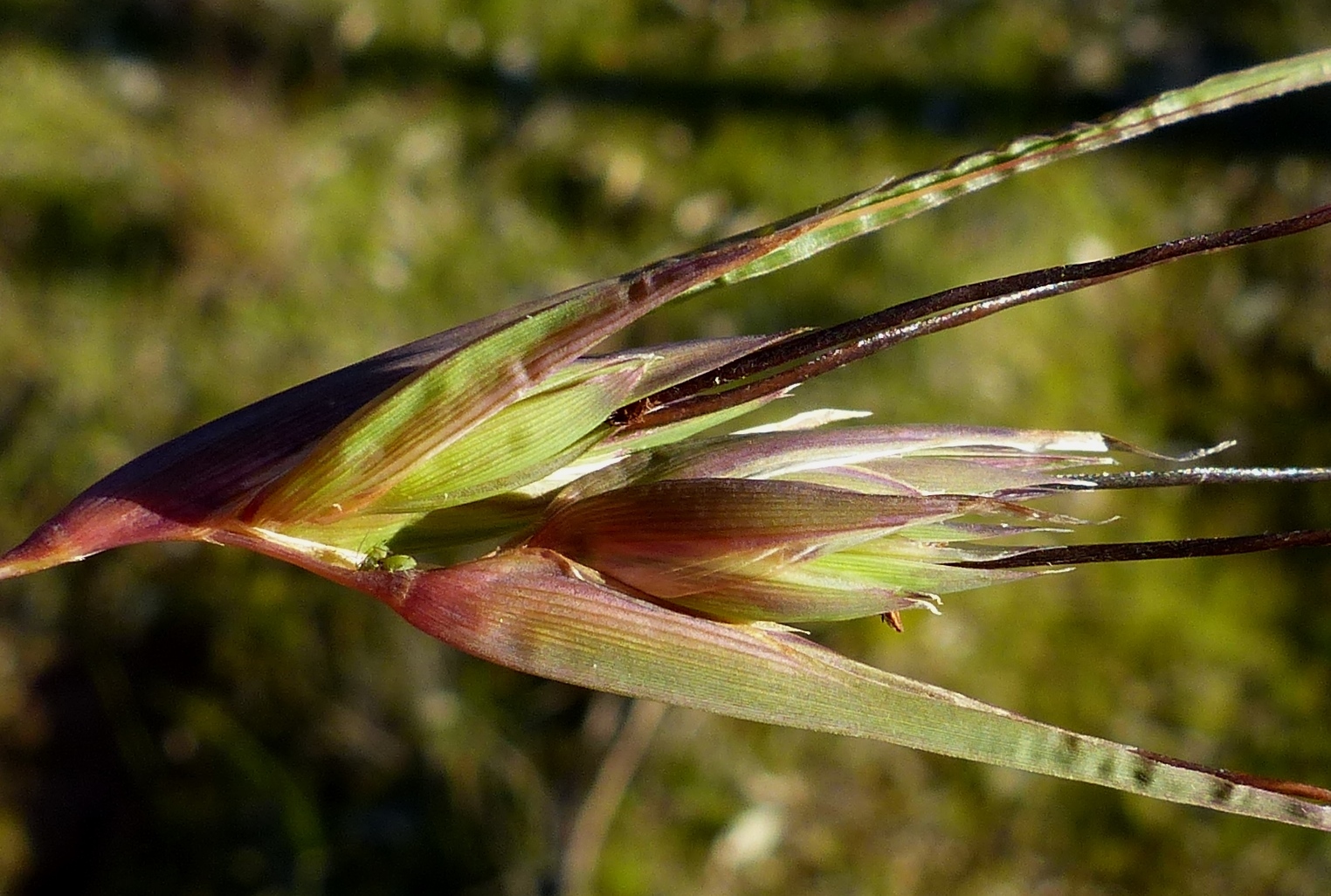
Origin of name uncertain. Possibly the Arabic name for T. triandra, but may refer to a depression where water lies after rain and dries up in summer.
Tufted annuals or perennials. Leaf blade narrow, linear, rolled in bud. Ligule membranous, sometimes fringed. Inflorescence an open leafy panicle of condensed racemes each subtended by a spathe in turn subtended by a larger spathe. Spikelets with 4 stalkless male or sterile spikelets forming an involucre to 1 stalkless bisexual spikelet and 1 or 2 stalked male or sterile spikelets, the whole enclosed by a spathe. Glumes 2, more or less equal, awnless, tough, lower glume 7-11 nerved, upper glume 1-5 nerved. Lemmas unequal, the lower nerveless and the upper with an angled awn, or the awn reduced, 1 nerved. Stalked spikelets awnless and flattened. Palea when present short, nerveless.
Seed.
An important native pasture grass.
Tufted plant with an open inflorescence consisting of a panicle of short clustered racemes subtended by leafy spathe-like bracts.
18 species mostly from the tropics of Asia and Australia. Australia has 5 species, 3 native and 2 naturalised.
Source: (2005). Poaceae. In: . Horticultural Flora of South-eastern Australia. Volume 5. Flowering plants. Monocotyledons. The identification of garden and cultivated plants. University of New South Wales Press.
